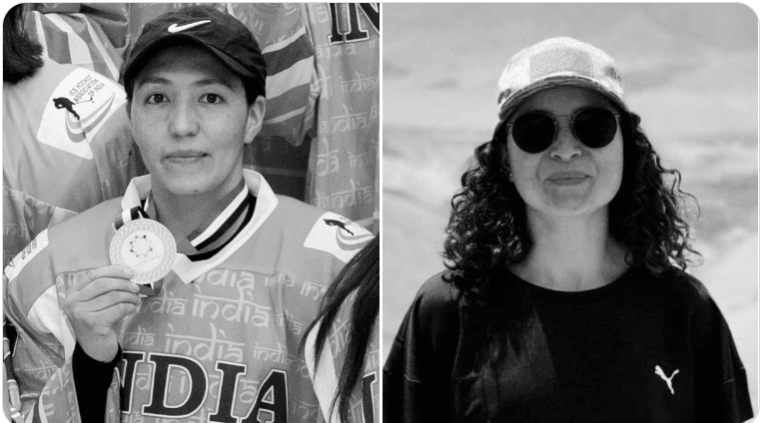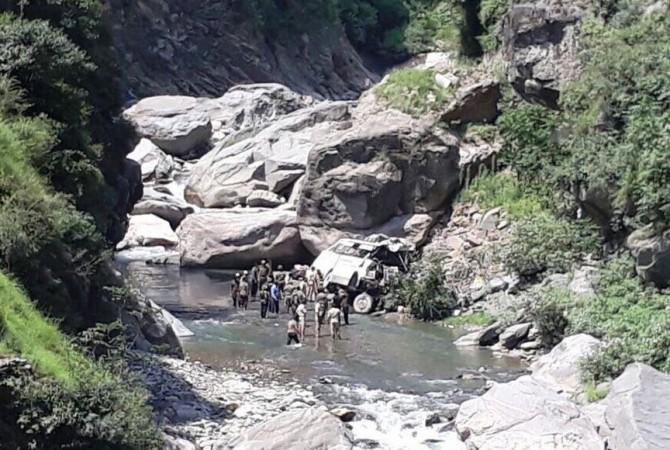The tragic killing of three female students of Jammu University including national-level budding players from Ladakh near Ramban in Jammu and Kashmir once again exposed the causal approach adopted by the executing agencies engaged in the much-publicized national highway widening project.
The vital Jammu-Srinagar national highway has virtually been turned into a "death trap" because, after the launching of the widening project, accidents became routine affairs in a stretch of the highway.
As reported earlier three female students of Jammu University were killed and another received injuries after a container truck hit a car near Dalwas area of Ramban on Jammu-Srinagar National Highway on Monday evening.

As per police, a container bearing registration number PB08Y-2168 on its way to Srinagar hit a Jammu-bound Baleno car bearing registration number JK02CC-8113 near Dalwas area on the Jammu-Srinagar National Highway, resulting in the spot death of two female students of Jammu University and critical injuries to two others. The collision was so potent that the car rolled down into a deep gorge after being hit by the container.
Two critically injured persons were rescued and shifted to CHC Batote where they were later referred to Government Medical College and Hospital (GMCH) Jammu for specialized treatment, where one among them succumbed to her injuries.
The deceased were identified as Tsetan Dolma, daughter of Tashi Andus, and Rigzen Lamo, daughter of Morup Dorjay, both residents of Ladakh, and Harman Anand, daughter of Harpinder Anand of Channi Himmat District Jammu.
Tsetan Dolma was a national-level ice hockey player and Rigzen Lamo was a promising national football player. The injured was identified as Pranav Bandral, son of Kuldeep Singh of Mubarak Mandi District Jammu. A case under relevant sections has been registered at Police Station Batote and an investigation started.
The 36-km Ramban-Banihal track on the highway is a "death trap"
While the condition of the stretch beyond Udhampur is deplorable, the 36-kilometre Ramban-Banihal track has virtually turned into a death trap - witnessing tragic road accidents almost regularly.
Due to the sinking of patches and massive landslides after repeated intervals, this highway has become "unpredictable" The condition of the road has gone from bad to worse due to ongoing widening work. The recent rains and flash floods have further compounded the situation.

One thinks twice or thrice when he/ she intends to undertake a road journey from Jammu to Srinagar. No side protection walls, strong steel grills/ steel nets, etc have been raised to the vulnerable places for the safety of the vehicles and the passengers passing through dangerous/ sliding zones in this sector.
For the last about one week, this highway has remained disrupted for the movement of traffic for about 6 to 9 hours a day. The regular long traffic jams have made the life of people/ road users miserable these days.
![Who is Dr Arun Kumar Mehta; IAS officer appointed J&K Chief Secy [details]](https://data1.ibtimes.co.in/en/full/761509/who-dr-arun-kumar-mehta-ias-officer-appointed-jk-chief-secy-details.jpg?h=450&l=50&t=40)
Chief Secretary reviews traffic scenario on highway
Jammu and Kashmir Chief Secretary, Dr. Arun Kumar Mehta chaired a meeting to review the traffic scenario on the Srinagar-Jammu National Highway.
Dr. Mehta enjoined the officers to complete the double laning of stretches between Banihal and Ramban and its subsequent black topping within 10 days. He advised them to squeeze the travel time on this road to 6 and 8 hours for LMVs and HMVs respectively.
At the request of the Traffic Police, the Chief Secretary urged the NHAI to repair works on the shooting-stone-prone stretches of the road for four hours within 5 days from coming Friday (3:00-7:00 am). He asked them to halt the traffic only during the night when traffic is very lean and minimum. He underscored the need to create minimum obstacles for traffic movement these days.
Dr. Mehta directed the traffic police to strictly maintain lane discipline on the road and take all the steps against the violators including e-Challaning. He asked them to act tough on those resorting to roadside parking.

















